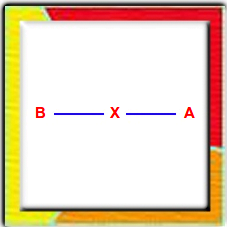Pattern Definition & Diagram

(36 Movements). PO-EUN is the pseudonym of a loyal subject Chong Mong-Chu (1400) who was a famous poet and whose poem “I would not serve a second master though I might be crucified a hundred times” is known to every Korean. He was also a pioneer in the field of physics. The diagram represents his unerring loyalty to the king and country towards the end of the Koryo Dynasty.
Click the “next” and “previous” arrows on the image below to step through this pattern.
[wowslider id=”16″]
Pattern Videos
Saju Jirugi, Saju Magki and Chon-Ji.
Rare International Tae Kwon-Do (ITF) video produced by General Choi.
You can see Grand Master Park Jung Tae, Grand Master Choi Jung Wha and other masters of the ITF performing tuls and explaining the movements of each Tul.
Po-Eun Tul performed by Jaroslaw Suska (5th Degree)
The history of Po Eun
 Po-Eun, also known as Mong Ju Chung, was a scholar, poet, and faithful public servant for the King during the Koryo Dynasty. At the age of 23, he tool three different national qualifying examinations, which were used to select public servants, and received the highest scores on all three. He participated in various national projects because the king had much confidence in his wide knowledge and good judgment. From time to time, he also visited Japan and China as a diplomat for the king, and was most knowledgeable about human behavior. He also founded an institute devoted to the theories of Confucianism. He was a pioneer in the field of physics. Jong Mong Ju held the highest civil post in Koryo. Ri Song Gye, the first King of the Ri Dynasty, tried to win him over to his side, but Jong refused to betray Koryo. After Ri Song Gye was injured fter falling from his horse during hunting, Jong tried to have him killed but jailed. Later Ri Song Gye invited Jong to his house trying to convince him again to betray his lord. But Jong answered with a poem:
Po-Eun, also known as Mong Ju Chung, was a scholar, poet, and faithful public servant for the King during the Koryo Dynasty. At the age of 23, he tool three different national qualifying examinations, which were used to select public servants, and received the highest scores on all three. He participated in various national projects because the king had much confidence in his wide knowledge and good judgment. From time to time, he also visited Japan and China as a diplomat for the king, and was most knowledgeable about human behavior. He also founded an institute devoted to the theories of Confucianism. He was a pioneer in the field of physics. Jong Mong Ju held the highest civil post in Koryo. Ri Song Gye, the first King of the Ri Dynasty, tried to win him over to his side, but Jong refused to betray Koryo. After Ri Song Gye was injured fter falling from his horse during hunting, Jong tried to have him killed but jailed. Later Ri Song Gye invited Jong to his house trying to convince him again to betray his lord. But Jong answered with a poem:
Even if, I may die, die a hundred times,
Even if my skeleton may become dust and dirt,
And whether my spirit may be there or not,
My single-hearted loyalty to the lord will not change.
Then Ri Song Gye realized he could not convince Jong. On the night of April 4, 1392, he sent an assassin to Sonjuk Bridge who brutally killed Jong Mong Ju with an iron hammer. This well-known scholar advocated loyalty to the Koryo Dynasty against the usurpers. Sonjuk Bridge is located about 1 km east of Nam Gate, being situated at the south foot of Mt. Janam, which rises on the city centre.
The small stone bridge dates from 1216. Later a bamboo grew up besides the bridge and from that the bridge got his name. In 1780 the bridge was closed for all traffic and since then it is a monument. After having got rid of Jong Mong Ju, Ri Song Gye succeeded in usurping the throne in July 1392.
The stone bridge has enjoyed the attention through generations. This became a historical bridge which hastened the replacement of the Koryo Dynasty by the Ri Dynasty. At first it was called Sonji but it was renamed as Sonjuk after his death remembering his “loyalty”. The red marks on the bridge seem to be his blood. Near the bridge are the Songin Monument, Kuksa Monument, Hama Monument and Phyochung Monument. The Songin Monument was built in 1641 in commendation of Jong Mong Ju for his “loyalty” and Kuksa Monument was erected in memory of the horse driver who died together with Jong Mong Ju. The Hama Monument was erected to Jong Mong Ju meaning that all passers-by should get off their horses.
The 474 year-old Koryo Dynasty ended with the death of Po-Eun, and was followed by the new Lee Dynasty. The death of Po-Eun symbolized faithful allegiance to the king.


